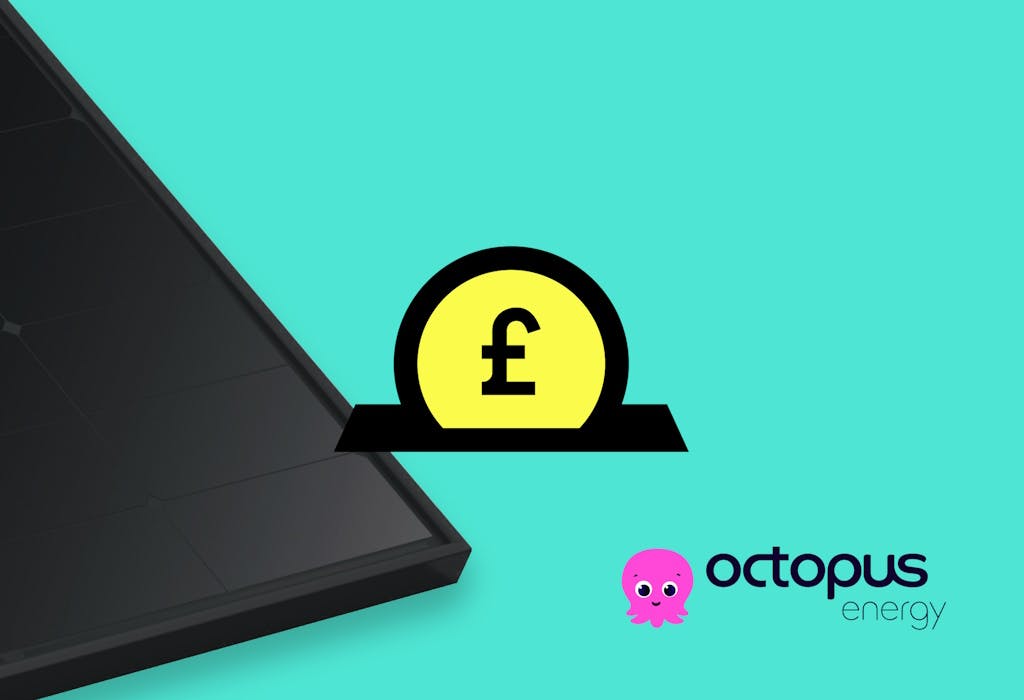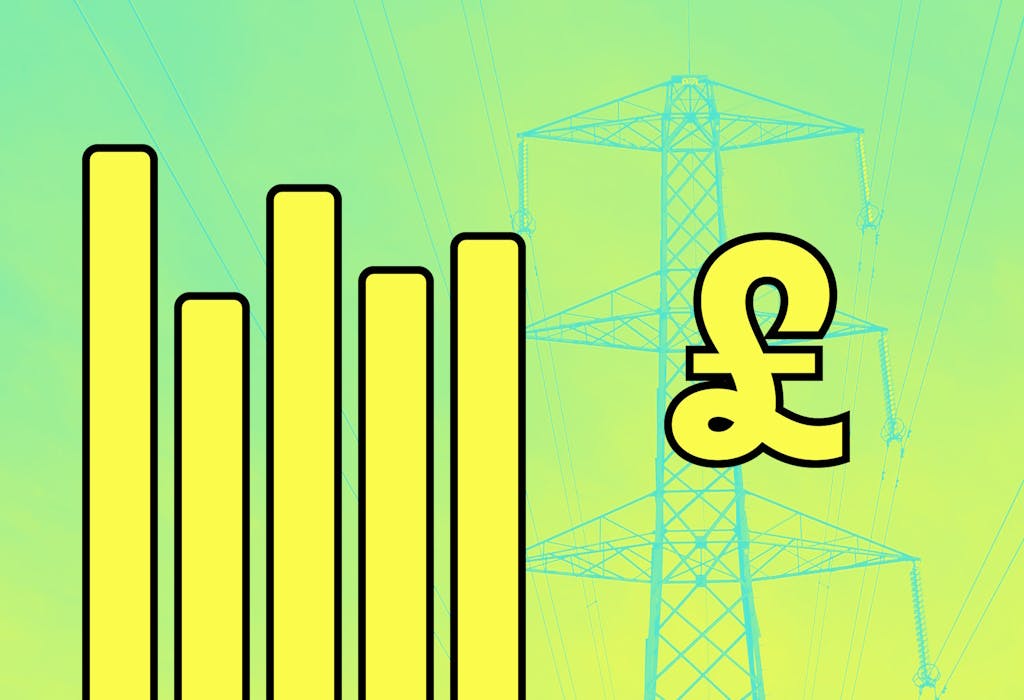- Solar advice hub
- Exporting-to-the-grid
- Octopus Flux: is it worth it?
Octopus Flux: is it worth it?
Here's how Octopus Flux works with your solar & battery system, how much you can earn, and whether it’s the best tariff for your home.


Why you can trust our content
We know that the solar industry is full of misinformation, but we only use reliable sources, including:
- Our experienced solar experts, installers and system designers
- Our own database of solar & battery system designs
- Authoritative bodies like MCS and the UK government




At a glance
A solar export tariff is a great way to earn extra money for the excess electricity that your panels send to the grid – and Octopus Flux is especially good.
This tariff allows you to buy grid electricity when it’s cheap, and sell it back to the grid – or use it in your home – during peak periods.
In this guide, we’ll explain how Octopus Flux works with your solar & battery system, how much you can earn, and whether it’s the best tariff for your household.
If you’re interested in how much you could save with a solar & battery system, enter a few details below and we’ll generate an estimate.
What is Octopus Flux?
Octopus Flux is an import and export tariff with peak and off-peak periods that’s available to homes with solar panels and a battery.
Its import and export rates are highest during the 4pm-7pm peak time, lowest during the 2am-5am off-peak period, and somewhere in between at all other times.
This setup allows you to buy low and sell high, simply by charging your battery at off-peak times and selling that same electricity to the grid during peak periods.
So instead of your battery simply acting as storage for your excess solar electricity, you can also use it to boost your income.
Octopus Flux helps the grid by encouraging households to shift their energy usage away from peak times, when the grid is under the most pressure. All you need to access it is to be (or become) an Octopus customer, and own a solar panel system that includes a battery.
This tariff doesn’t pay as much as Intelligent Octopus Flux, but it is less restrictive about which battery you can have.
To sign up for Octopus Flux, click the button below.
Octopus Flux: the key details
Octopus Flux has been around since March 2023, changing every three months to reflect Ofgem's new price cap.
It gives you the flexibility to choose any storage battery, can earn you hundreds of pounds per year, and comes with no exit fee.
| Details | |
|---|---|
| Provider | Octopus Energy |
| Tariff name | Octopus Flux |
| Tariff type | Variable |
| Tariff change frequency | Every three months |
| Average savings vs normal tariff | £531 per year* |
| Requirements | • Receive grid electricity from Octopus • Own solar panels and a battery |
| Exit fee? | No |
How does Octopus Flux work?
Once you’ve switched to Octopus Flux, you’ll earn money for every kWh you export to the grid.
You’ll pay and receive a different rate for each kWh, which will depend on the time of day and where in the country you live.
To take full advantage of the tariff, you’ll have to use your solar app – which is usually supplied by your inverter’s manufacturer – to manually set your battery to import at off-peak times and export at peak times.
Ideally, you should charge your battery to a level that allows your solar panels to fill up the remaining space while also powering your home.
So if the next day’s forecast is clear and sunny, you may want to set your battery to charge up to a lower level than you would if the outlook was heavily overcast.
Other suppliers’ export tariffs don’t come with off-peak and peak times for exporting, meaning they don’t offer the ability to use your battery as a buying and selling machine.
What rates does Octopus Flux pay?
All rates correct as of 7 November 2024 – and they won’t change until January 2025.
With Octopus Flux, you’ll earn the most by exporting at peak times and importing at off-peak times, wherever you live.
As you can see above, rates differ across the country, depending on the price Octopus pays for electricity in specific regions.
This table doesn’t include the rates for importing and exporting at other times, but it’ll always be roughly halfway between the peak and off-peak rate.
How much money can you earn with Octopus Flux?
The average household can make £531 per year from exporting excess electricity via Octopus Flux.
This figure is based on a home with a 4.4 kilowatt-peak (kWp) system and a 5.2kWh battery (which are standard sizes), an annual consumption of 3,400kWh (which is the UK average), and solar irradiance of 850kWh per kWp, which exports 65% of its solar-generated electricity.
That doesn’t even include the money this household would save from using electricity from its own solar panels, instead of the grid. Take this into account, and overall this household could reduce its annual electricity bill by £905.
To learn more, check out our guide to the best solar export tariffs.

How is it different from Intelligent Octopus Flux?
Octopus Flux doesn’t come with smart battery controls, which means you’ll have to manually set your battery’s import and export times, although this is easy to do with your inverter’s app.
In contrast, Intelligent Octopus Flux does it automatically, using weather reports to optimise the amount of off-peak electricity it draws from the grid to sell and use at peak times.
Octopus Flux also allows you to use any storage battery, while Intelligent Octopus Flux only works with specific brands.
Intelligent Octopus Flux also offers higher rates, and its import and export rates match, meaning you’re always guaranteed to be paid the same for your exports as you pay for your imports – unlike Octopus Flux.
The one major advantage of signing up to Octopus Flux is that any battery is eligible – but overall, Intelligent Octopus Flux is the better export tariff.
For more information, read our guide to Intelligent Octopus Flux.
How to set up your battery for Octopus Flux
To set up your battery for Octopus Flux, just access your free solar app, which will be made by your inverter’s manufacturer.
Through the app, you can set your battery to charge during the 2am-5am off-peak period, and discharge to your home and the grid at peak times, between 4pm and 7pm.
That way, you can cut the amount of electricity you import during peak periods – when it’s more expensive – while also selling any excess electricity to the grid when it’s most profitable.
Without the smart battery controls of Intelligent Octopus Flux, you may have to use trial and error to work out how electricity you should import from the grid during off-peak times to maximise your earnings.
For more information, check out our guide to solar panel apps.
How can you sign up for Octopus Flux?
To sign up for Octopus Flux, you’ll need to first be an Octopus customer.
If you don’t currently pay Octopus for your electricity, you can switch easily, with your current provider and Octopus doing all the hard work.
Once you’re on an Octopus tariff, you’ll just need to have a valid smart meter – which currently means either a SMETS2 model or a SMETS1 made by Secure.
If you’re not sure what kind of smart meter you have, ask Octopus for guidance.
If Octopus is connecting to your meter for the first time – either because it’s new or you’re switching from a different supplier – it’ll take Octopus around 14 days to establish a remote link.
At this point, Octopus will start receiving half-hourly updates from your meter, and will send you an email asking you to agree to the company’s terms and conditions.
When you hit accept, the switch to Octopus Flux should happen more or less instantly.
To sign up for Octopus Flux, click the button below.
Eligibility requirements
To be eligible for Octopus Flux, you’ll need to own solar panels and a battery.
This gear can come from any brand, though it must be set up by an installer who’s been certified by Flexi-Orb or MCS.
You’ll need a copy of your system’s Flexi-Orb or MCS certificate, as well as the letter your Distribution Network Operator sent you to confirm that your installer registered your system.
You’ll also need a qualifying smart meter, and as mentioned above, you must be on an Octopus import tariff – even briefly – before you can switch to Octopus Flux.
How long does it take?
It usually takes a maximum of three weeks to switch import suppliers, and between two and eight weeks to finish the sign-up process for export tariffs.
So you'll usually finish the process of signing up to Octopus Flux in five to 11 weeks, which is pretty typical for a solar export tariff.
Is it worth switching to Octopus Flux?
It's worth switching to Octopus Flux for some households, although it’s not necessarily the best choice for everybody.
Most homes will benefit more from Intelligent Octopus Flux, which pays more for your exports, charges less for your imports, and takes care of the entire process for you.
It’s usually one of the best export tariffs if you don’t have an electric car or heat pump, no matter the size of your solar panel system or amount of electricity you use – though Octopus Flux does allow you to use any battery you want.
If you do have other renewable technologies, there are other tariffs which may save you more money.
Households with a heat pump and a solar panel system that’s 5.2kWp or smaller will probably be better off signing up to Cosy Octopus for imported electricity and Octopus Outgoing Fixed for exports.
Cosy Octopus offers a Cosy Rate from 4am to 7am, 1pm to 4pm, and 10pm to 12am that’s around 50% cheaper than your region’s Flexible Octopus rate.
If your solar panel system is larger than 5.2kWp though, Intelligent Octopus Flux may suit you better.
Electric vehicle drivers may want to choose Intelligent Octopus Go, which allows you to charge your car for 7p per kWh, at any time of day – and use the same rate to power your home’s appliances between 11:30pm and 5:30am.
If you don't have solar panels, think about signing up to Agile Octopus, which incentivises customers to move their electricity consumption away from peak periods.
Next steps
Octopus Flux is one of the best export tariffs on the market, and through manual battery controls you can maximise your profits.
You also have the freedom to use any battery on the market to earn export income, whilst Intelligent Octopus Flux limits you to certain battery brands
To make money with Octopus Flux, or to maximise your earnings with any solar export tariff, you’ll need a solar & battery system.
If you’d like to know how much you could earn – and save – with a system, enter a few details below and we’ll generate an estimate.
Octopus Flux: FAQs

Intelligent Octopus Flux: explained
Read full story
Agile Octopus: is it worth it?
Read full story
Intelligent Octopus Go: is it worth it?
Read full story
What are the best SEG rates?
Read full story
Written byJosh Jackman
Josh has written about the rapid rise of home solar for the past six years. His data-driven work has been featured in United Nations and World Health Organisation documents, as well as publications including The Eco Experts, Financial Times, The Independent, The Telegraph, The Times, and The Sun. Josh has also been interviewed as a renewables expert on BBC One’s Rip-Off Britain, ITV1’s Tonight show, and BBC Radio 4 and 5.